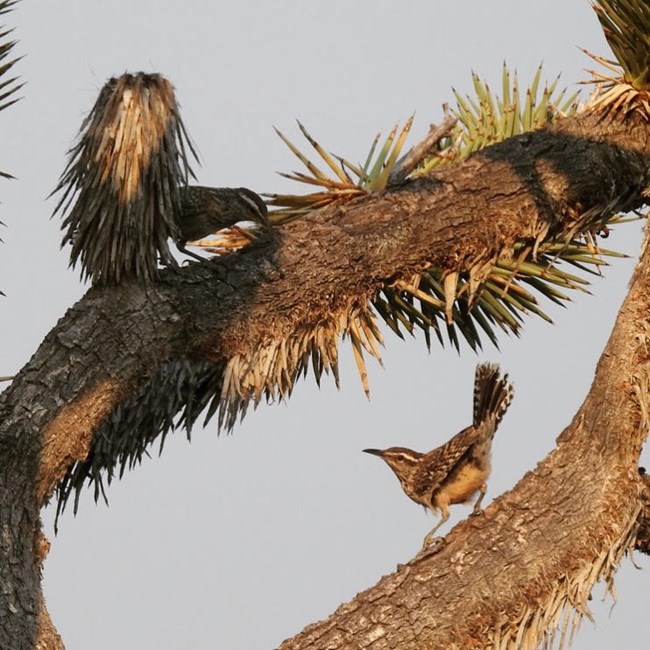
Barbara Michel, NPS Over 200 species of birds have been spotted at Mojave National Preserve! Though a few species are able to live here permanently, most species are deterred by the area’s extreme summer temperatures, lack of water, and sparse vegetation. The best time to observe birds in the Mojave National Preserve is in the spring and fall, when neotropical migrants are moving from their winter homes in central America to their summer homes farther north. During migration season, a variable abundance of diverse species can be found, especially around springs and wooded areas. A few notable species are outlined below. View our spreadsheet of all known bird species in Mojave National Preserve (22.7 KB). Ravens: Ravens are notorious as a portend of ill fortune in fables. In reality, they pose a grave threat to baby desert tortoises. Highly intelligent, opportunistic birds, ravens feed on rodents, carrion and baby desert tortoises. More development has led to an increase in trash and a raven population explosion. Cactus wren: Known for usurping the nests and removing the eggs of other birds,the Cactus Wren is found in the southern areas of California and Nevada and the central sections of Texas and Mexico. Roadrunner: Roadrunners run upwards of 15 miles per hour and dine on lizards and snakes. They can be heard "cooing" in the desert bush and chaparral where they reside. Unique "zyodactyl" feet with two toes pointing forward and two backward make them stand out among many other bird species. Golden eagle: Golden eagles range from sea level to several thousand feet, preying upon rodents and sometimes baby tortoises. More closely related to the Red-tailed Hawk than the Bald Eagle, the Golden Eagle often returns to the same nest annually, reaching maturity at approximately 5 years of age. Red-tailed hawk: Weighing 2-4 pounds, the red-tailed is the largest hawk. Armed with keen eyesight considered 8 times more powerful than that of humans and a wing span that can reach 56 inches, it lives on rodents, rabbits, snakes, and lizards. 
Photo Dave Hursey/NPS Learn more about birds and birding throughout the National Park Service. 
B Michel, NPS Current Challenges For Our Desert Birds
|
Last updated: January 16, 2025
